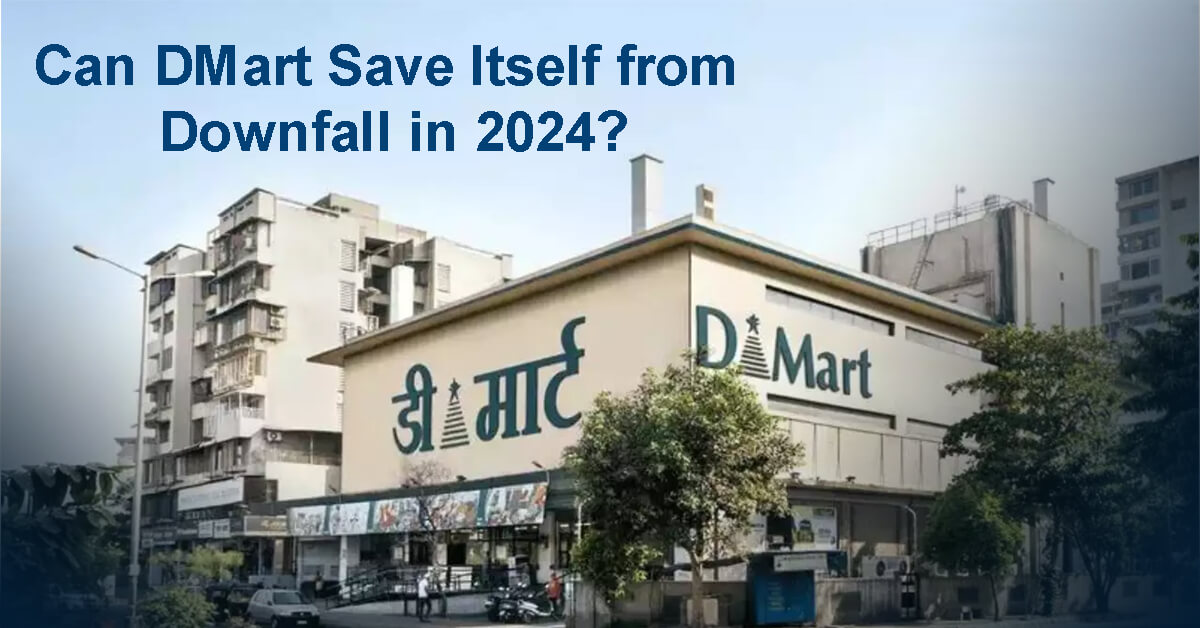Dmart, a leading retail giant in India, is currently facing significant challenges. The company’s stock prices have seen a sharp decline, and there are multiple reasons behind this. Let’s delve into DMart’s current situation, the challenges it faces, and how it can potentially recover.
Dmart’s quarterly results have been disappointing. In the last quarter, its net profit dropped to ₹659 crore. The company’s stock price has fallen over 13% in the past month, causing concern among investors about its future.
Revenue Structure: DMart’s Income Sources
Dmart‘s revenue mainly comes from three categories:
- Food (56.4%): Including fruits, vegetables, cooking oil, and other food items.
- Non-Food FMCG (20.15%): Home care, personal care, and toiletries.
- General Merchandise and Apparel (23.45%): Crockery, garments, and household appliances.
Dmart heavily depends on the food category, facing competition in these areas.

Rise of Quick Commerce
Quick commerce is on the rise, with companies like Zomato’s Blinkit rapidly establishing their market presence. Blinkit and similar players operate with a ‘dark stores’ model, enabling 10-20 minute deliveries. Dmart’s inventory management system does not compete with this new service. Its business still relies on physical stores, lagging behind these new players.
Scalable Business Model of Quick Commerce: Blinkit and similar players use an ‘Asset-Light’ model, leasing dark stores to franchises. This model contrasts with Dmart’s traditional physical stores, giving competitors a competitive edge. These companies expand rapidly, offering convenience to customers, threatening Dmart’s market share.
Also Read: Asian Paints Share Down Reason
DMart’s Expansion Limitation
Most of Dmart’s stores are located in Maharashtra and Gujarat, with negligible presence in northern and eastern states of India. Despite a large consumer base in these regions, Dmart struggles to expand its reach there, posing a significant hurdle to national expansion.
Also Read : The Downfall of Ola Electric
Shift in Consumer Behavior
Due to digitalization and quick commerce, many consumers now fulfill their needs online. Middle and upper-middle-class consumers who previously shopped at physical stores now prefer the convenience of online orders. This shift challenges Dmart’s traditional retail model.
Failed Attempt with DMart Ready
Dmart’s quick commerce service DMart Ready received a loss of nearly ₹140 crore. As a result, the company did not focus much on this project. This failure shook Dmart’s confidence, making it lag behind other quick commerce companies in the market. Its Online App also available as DMart Ready Online Grocery App.
Valuation Challenges and Stock Price Pressure
Dmart’s Price-to-Earnings (P/E) ratio has dropped from over 200 to 95. Investors now have lower expectations for its growth potential. If valuations do not improve, the stock price may drop further.
Also Read : Tata Group Stock Upside, Partners with Suzuki for EV Development in 2024
PM E-Drive Scheme: Great Opportunity in these 3 Electric Three-Wheeler Stocks!
Future Path
DMart needs to implement new strategies to face this tough competition. The company may need to adopt a franchise model or partner with other players in quick commerce. If DMart sticks to its current retail model, it may struggle to compete with its rivals.
Conclusion
Dmart faces new challenges from quick commerce. To stay relevant, it must adapt to new services like quick commerce and make its existing model more efficient. The next few quarters will reveal how Dmart handles these difficulties.
